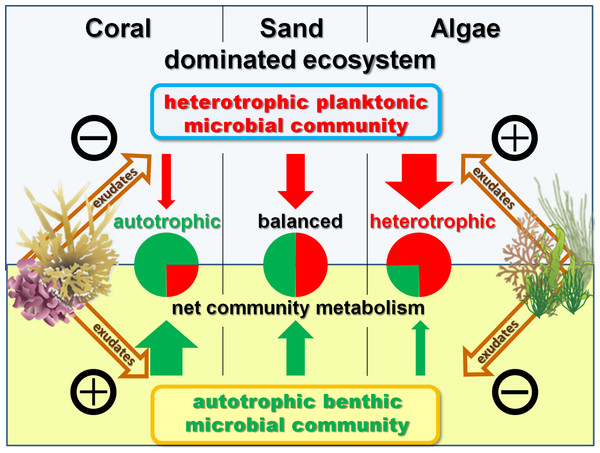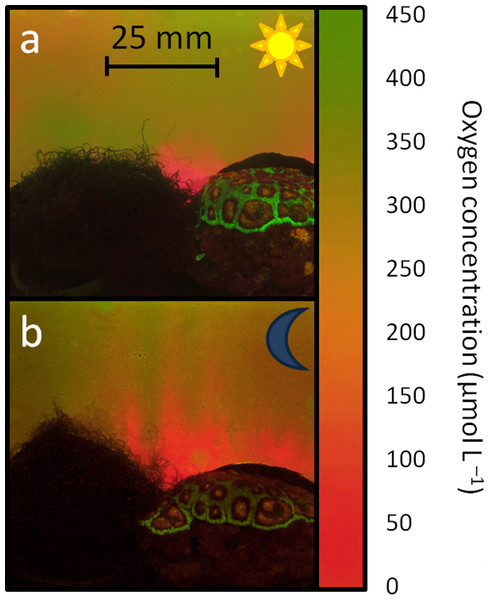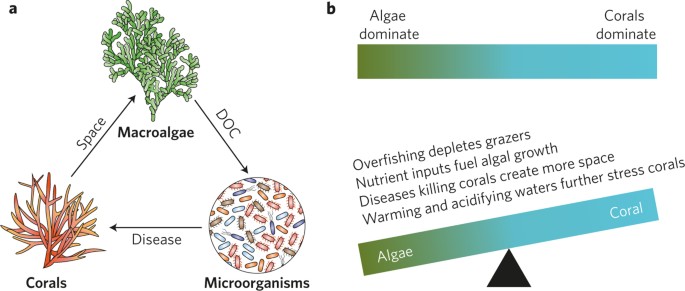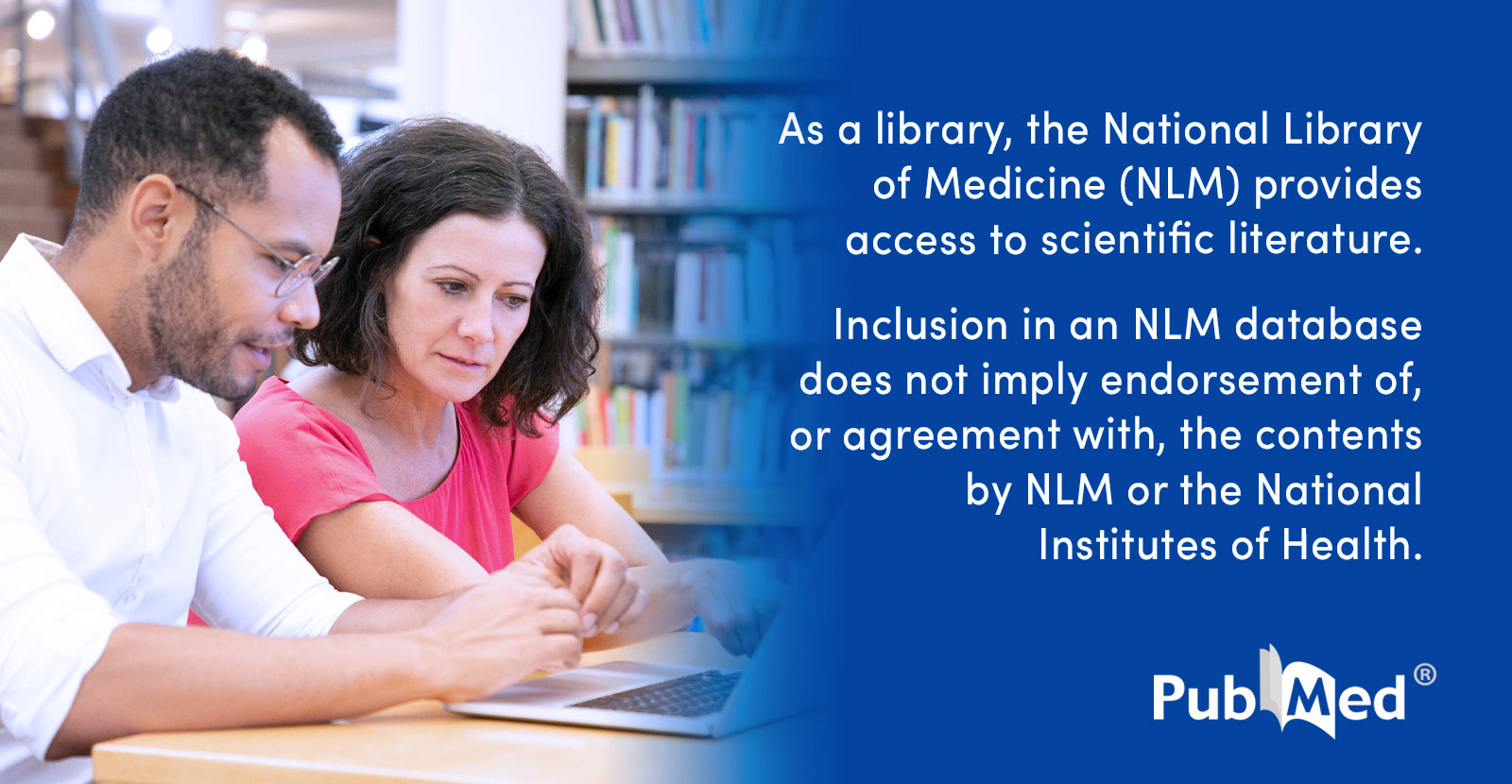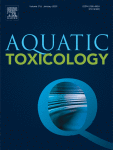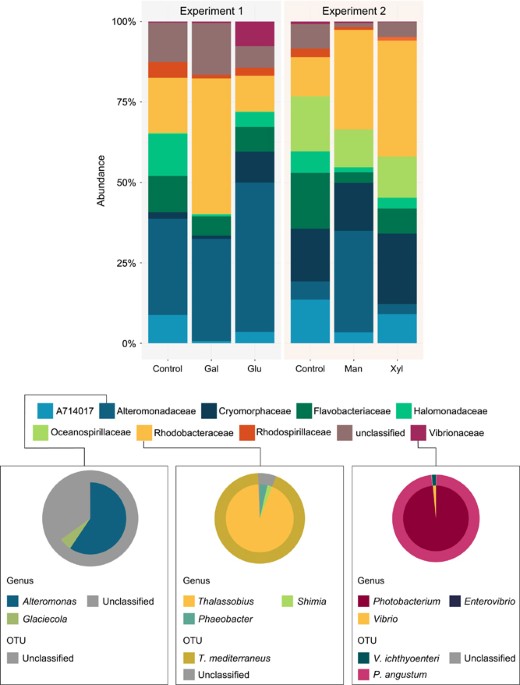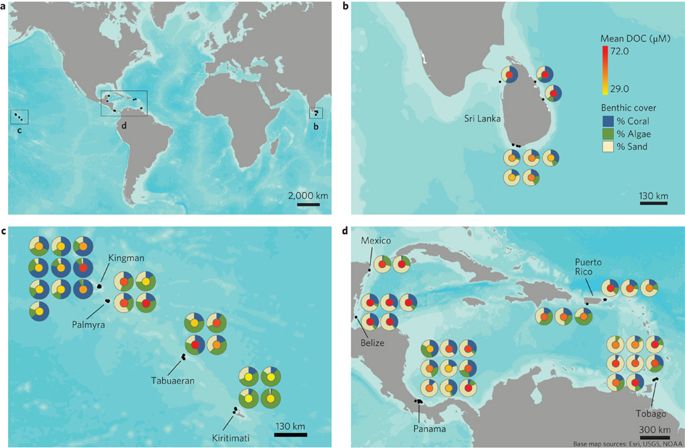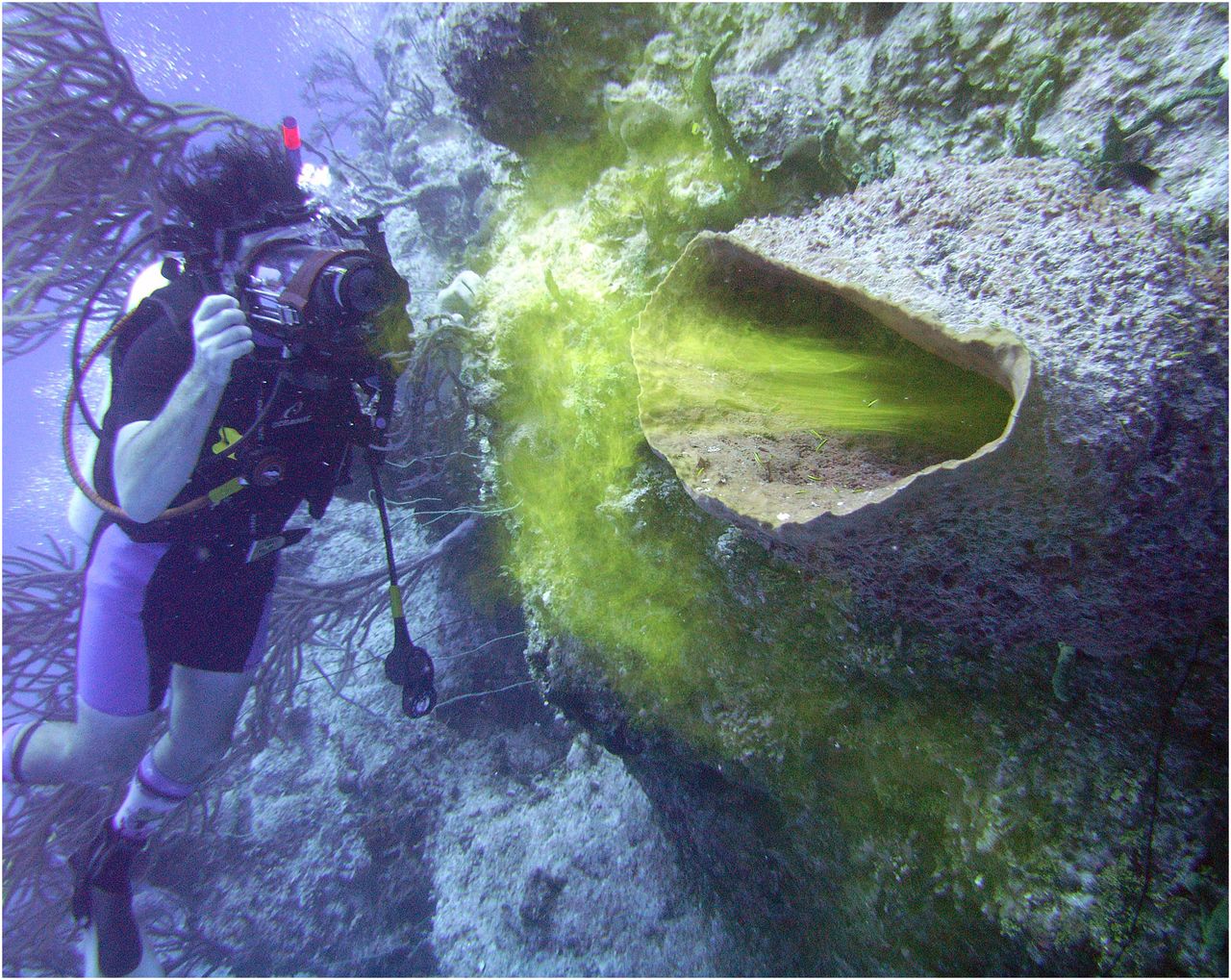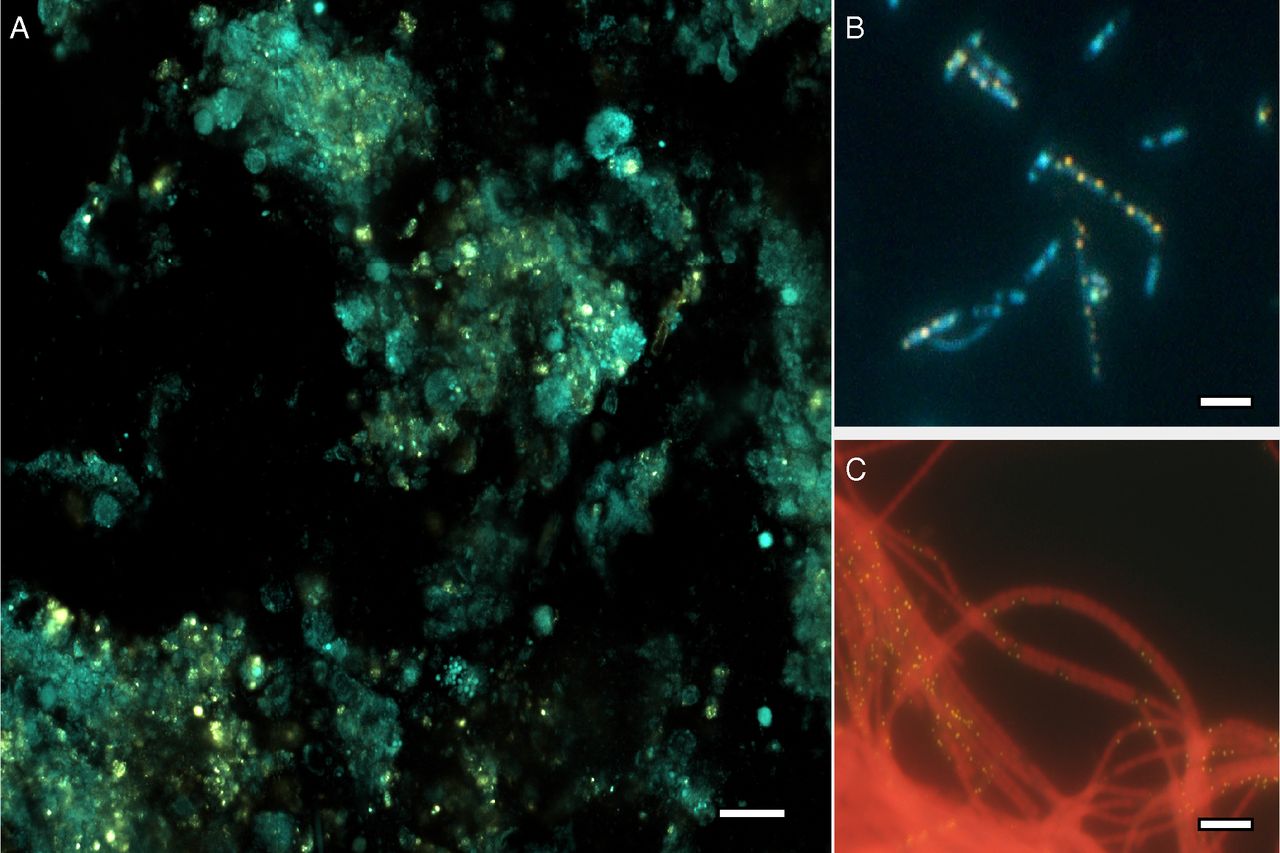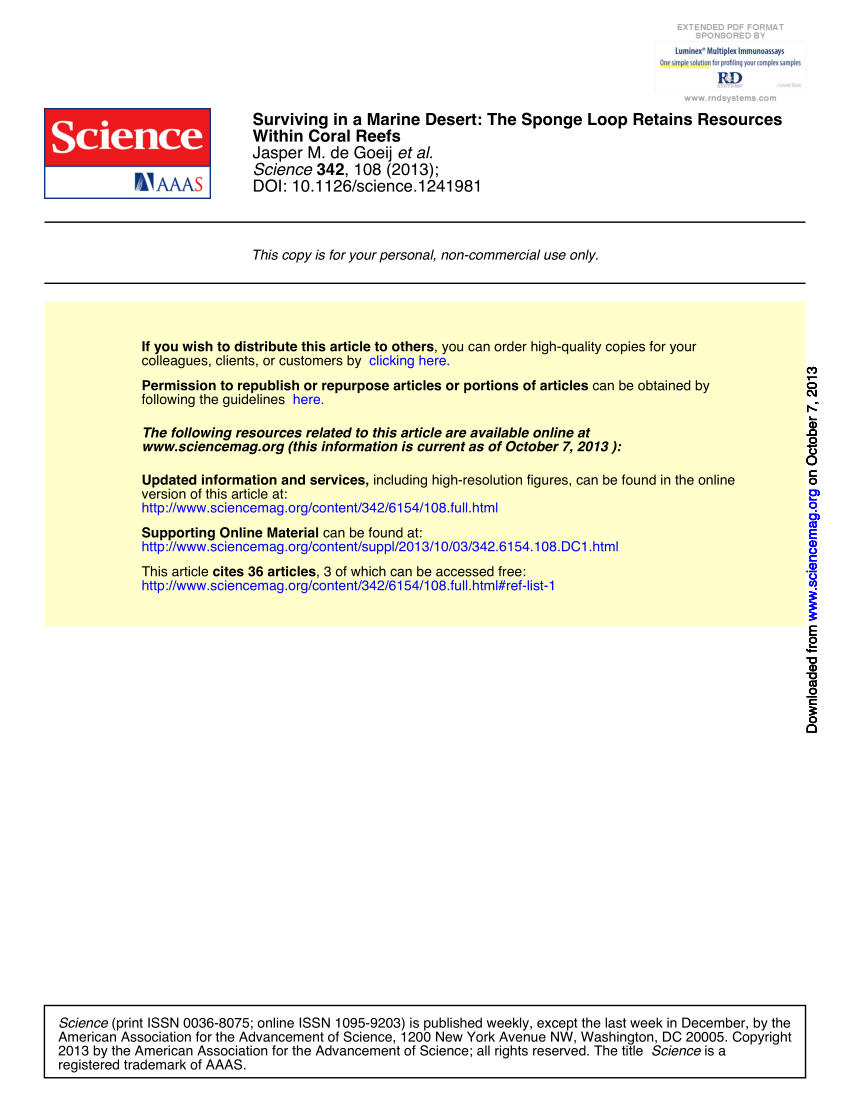Hey @Timfish ,
Good to see you today. Here are those Aquabiomics tests I mentioned. I thought it was interesting there was a shift in bacterial populations after dosing bottled bacteria. But, I am not sure how much information I really gained from the tests since I am not familiar with the different microbes. The vibrio population seemed reduced in the second test.
Test before 5 weeks of alternately weekly dosing Dr. Tim's Eco-balance and Waste away:
Pdf link: Aquabiomics Test 06/08/23
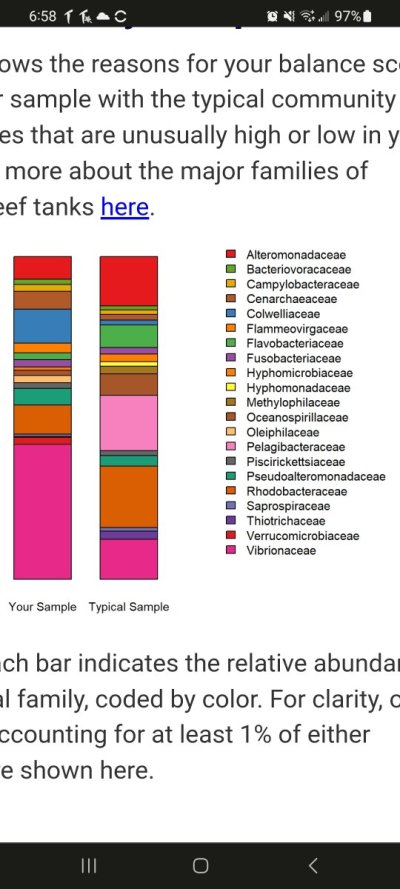
After adding the bacterial supplements for 5 weeks:
Pdf link: Aquabiomics Test 07/18/23
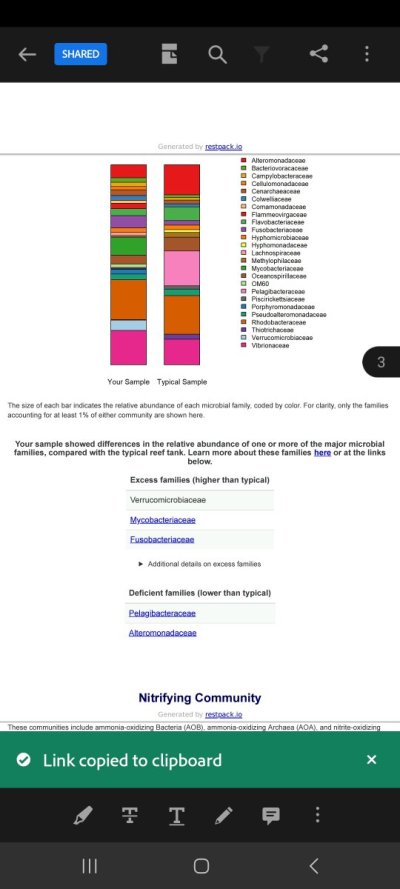
I hadn't added any bottled bacteria to this tank for 4.5 years after initial setup. Visually the tank was cleaner after the bacteria addition, and the ORP went up by about 25% in 24 hours and has remained there. There were problems with STN in Acropora, that have cleared up, but I made other changes at the same time. So, not very scientific. Let me know if you have any insight.
Good to see you today. Here are those Aquabiomics tests I mentioned. I thought it was interesting there was a shift in bacterial populations after dosing bottled bacteria. But, I am not sure how much information I really gained from the tests since I am not familiar with the different microbes. The vibrio population seemed reduced in the second test.
Test before 5 weeks of alternately weekly dosing Dr. Tim's Eco-balance and Waste away:
Pdf link: Aquabiomics Test 06/08/23

After adding the bacterial supplements for 5 weeks:
Pdf link: Aquabiomics Test 07/18/23

I hadn't added any bottled bacteria to this tank for 4.5 years after initial setup. Visually the tank was cleaner after the bacteria addition, and the ORP went up by about 25% in 24 hours and has remained there. There were problems with STN in Acropora, that have cleared up, but I made other changes at the same time. So, not very scientific. Let me know if you have any insight.
Last edited:









